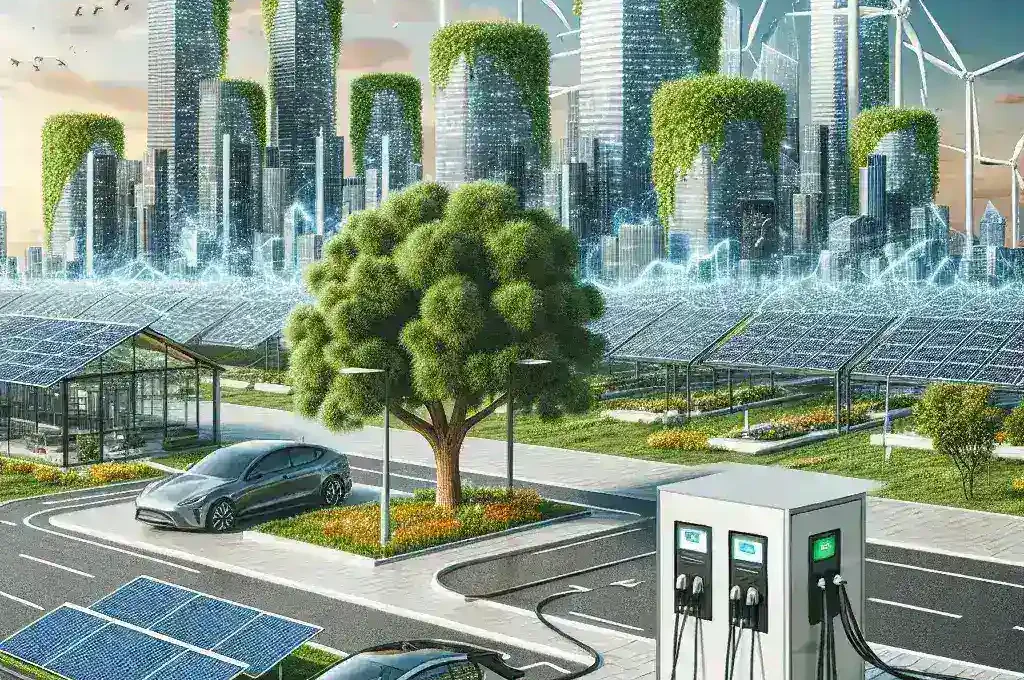In a world increasingly aware of the ecological footprint it leaves behind, energy-efficient technology is no longer just a ‘nice-to-have’—it is a necessity. Innovations in this sector are transforming everything from household appliances to industrial machinery, making it possible to balance economic growth with environmental stewardship. This article delves into some of the most groundbreaking advancements in energy-efficient technology, highlighting how these innovations are being integrated into various aspects of everyday life.
Smart Grids
Smart grids are revolutionizing the way electricity is distributed and consumed. These intelligent systems use digital technology to monitor and manage the production and distribution of electricity, optimizing the flow of energy and reducing waste. This ensures that energy is utilized more efficiently, leading to lower emissions and reduced costs for consumers.
Real-Time Data Analytics
One of the key components of smart grids is real-time data analytics. This technology enables utilities to monitor electricity demand and supply in real time, making it easier to balance the load and reduce energy waste. With the help of advanced algorithms, utilities can predict consumption patterns and adjust their operations accordingly.
Decentralized Power Generation
Smart grids facilitate the integration of decentralized power generation sources such as solar panels and wind turbines. By allowing these smaller, localized energy sources to connect directly to the grid, smart grids help reduce the need for large, centralized power plants, which are often less efficient and more polluting.
Energy-Efficient Appliances
The demand for energy-efficient appliances has surged in recent years, and manufacturers have responded with a range of innovative products designed to reduce energy consumption. These appliances not only save consumers money on their energy bills but also contribute to a greener planet.
Smart Thermostats
Smart thermostats are a prime example of energy-efficient technology in the home. These devices learn a household’s schedule and preferences, adjusting the temperature automatically to reduce energy use without sacrificing comfort. Some models even provide insights into energy consumption patterns and suggest ways to cut back.
LED Lighting
Light Emitting Diode (LED) lighting has become the gold standard for energy-efficient illumination. LEDs use significantly less energy than traditional incandescent bulbs and have a longer lifespan. Advances in LED technology have led to the development of even more efficient bulbs that provide the same level of brightness while consuming less power.
Renewable Energy Technologies
Renewable energy sources such as solar, wind, and hydroelectric power are at the forefront of the transition to a more sustainable energy landscape. Recent innovations in these areas are making renewable energy more efficient and accessible than ever before.
Solar Power
Innovations in solar power technology have drastically improved the efficiency of solar panels. New materials, such as perovskite, are being developed to increase the amount of sunlight that can be converted into electricity. Additionally, solar panel installations are becoming more affordable, making it easier for individuals and businesses to adopt this clean energy source.
Wind Turbines
Wind turbine technology has also seen significant advancements. Modern wind turbines are not only more efficient but also quieter and more durable. Innovations such as vertical-axis wind turbines and floating offshore wind farms are expanding the potential for wind energy in locations where traditional turbines are not feasible.
Energy Storage Solutions
Effective energy storage is crucial for the reliable use of renewable energy sources, which can be intermittent. Advances in battery technology and other storage solutions are ensuring that energy can be stored and used as needed, enhancing the reliability of renewable energy systems.
Lithium-Ion Batteries
Lithium-ion batteries are currently the most popular energy storage solution due to their high energy density and long lifespan. Recent improvements in battery chemistry and design are making lithium-ion batteries even more efficient, extending their applications from small electronics to electric vehicles and grid storage.
Flow Batteries
Flow batteries are an emerging technology with the potential to transform energy storage. Unlike traditional batteries, flow batteries store energy in liquid electrolytes, which can be scaled up easily to store large amounts of energy. This makes them ideal for grid storage and other large-scale applications.
Green Building Technologies
Building design and construction are undergoing a transformation with the adoption of energy-efficient technologies. Green buildings are designed to minimize energy use and reduce environmental impact, contributing to a more sustainable future.
Insulation and Windows
Improved insulation materials and energy-efficient windows are key components of green building design. These technologies help maintain indoor temperatures, reducing the need for heating and cooling and consequently lowering energy consumption.
Smart Building Systems
Smart building systems integrate various technologies such as lighting, HVAC, and security systems to optimize energy use. These systems can monitor and adjust energy consumption in real-time, ensuring that buildings operate as efficiently as possible.
Conclusion
Innovations in energy-efficient technology are playing a crucial role in the global effort to reduce carbon emissions and combat climate change. From smart grids and appliances to renewable energy and green building technologies, these advancements are helping to create a more sustainable and energy-efficient future. As technology continues to evolve, the potential for further improvements in energy efficiency is limitless, promising a brighter, cleaner future for all.

